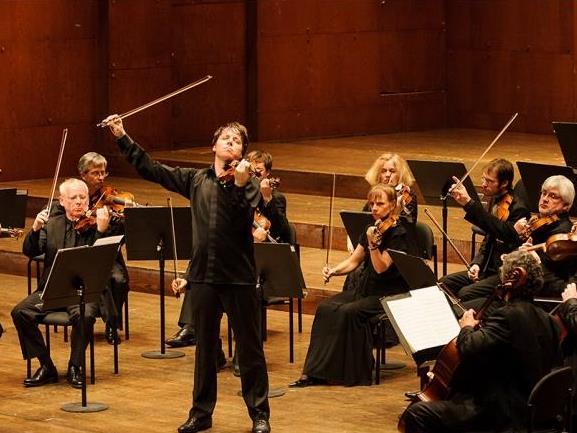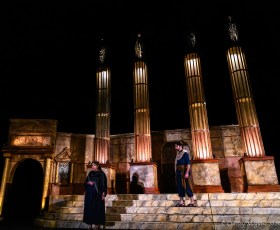Academy of St Martin in the Fields: Joshua Bell and The Academy Chamber Ensemble. Image via Melbourne Recital Centre.
The Academy of St Martin in the Fields presented two sold-out evening concerts in the Melbourne Recital Centre on 19 and 20 April, 2017. I attended the second that featured two works by Mozart (his Symphony No 25 in G minor, K183 and Violin Concerto No 4 in D major, K218) and Beethoven’s Symphony No 3 in E flat major, Op 55 ‘Eroica’. American violinist Joshua Bell was selected by the musicians to be their music director in 2011, the first person to hold this post following Sir Neville Marriner (also a violinist) who formed the orchestra in 1958. The ensemble has enjoyed a distinguished history mainly from its legacy of many recordings (some 500) made with its founder. Notably, its recording of the 1984 soundtrack to Miloš Forman’s film Amadeus sold 6.5 million copies. This was the distinguished ensemble’s first tour to Australia under its new director.
There may always be a compromise felt with player-led ensembles. A telling sense of enthusiasm and vibrancy from direction within the ensemble must come at the expense of a conductor visible to all and occupied with keeping ensemble together with precision and clarity, careful phrasing and in maintaining balance between sections. On this occasion it was clear that Joshua Bell was a much better violinist than conductor, and although his drive and enthusiasm was evident from the first bar to the last, imbalance between violins and the rest of the ensemble, imperfect entries of tutti, woodwinds and brass were more or less a constant. But problems were not confined to the efficiency of direction.
Bell’s conception of the Mozart works was large and strident but often forfeited subtle Viennese Classical nuance overridden with percussive, clipped, thrusting and punctuated syntax. There was a lack of patience to allow the music to sing for itself. The violin balance improved when Bell became a soloist in the Concerto, but his all-encompassing, exhausting style continued unabated. The Romantic and virtuosic cadenzas created by Bell himself, with references to the Overture from The Marriage of Figaro, were flashy and uninteresting.
Beethoven’s Symphony No 3 had a similar treatment though this more resilient music fared better. The second movement Marcia funebre (the composer retracted a dedication to Napoleon Bonaparte, but later admitted that this was intended to mourn the emperor’s death) was not for a moment allowed to settle nor simply be. The hunting calls in the Trio, though, delighted. The finale, in variation form, was frenetic and unrelenting up until the final chord; a predictably punctuated double exclamation mark. Drenched in perspiration, Maestro Bell gratefully accepted a standing ovation before leaving the stage without an encore being offered.
Joshua Bell performed on the 1713 Huberman Stradivarius violin, using a late 18th century French bow by François Tourte. It was impressive to witness his virtuosity throughout this concert, but I wish that some of the other distinguished voices on stage, of which there were several, had been allowed air to breathe.
Rating: 3 1/2 stars out of 5
The Academy of St Martin in the Fields
Joshua Bell, music director
Presented by Melbourne Recital Centre
Thursday, 20 April, 2017
Elisabeth Murdoch Hall, Melbourne Recital Centre
7.30pm





